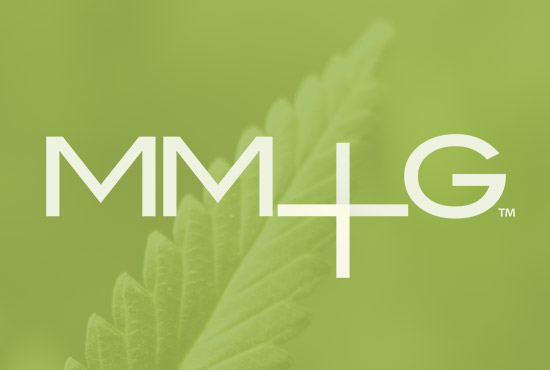For commercial cannabis businesses, compliance will be the name of the game come January 1, 2018. But the guidelines and regulations involved with CCB can be a little confusing depending on which industry you’re in. In an earlier post we talked about the Bureau of Cannabis Control’s regulations. Those rules are specific for retailers, distributors, micro-businesses, events licensing and labs that test for quality control among other things. Today? We’re looking at the California Department of Food and Agriculture’s regulations for cultivators.
What you need to know
There are four key takeaways for the new regulations provided by CalDFA and we’ll be touching on all of them in this post. For any clarifications or questions that you might have about your business and what the regulations mean for you, simply contact us!
1) Licensing:
- You’re a cultivator and that means you know your crops. The licenses are essentially an easy method for a broad audience to clearly understand that, in the eyes of the state, you know your crops as well.
- License Application Fees. CDFA will charge a one-time fee to review an annual cultivation license application. Application fees are scaled based on the average annual production of the license type and range from $135 to $8,655.
- Annual License Fees. The license fee schedule has been updated based on an economic analysis of CDFA costs. License fees are scaled based on the average annual production of the license type and range from $1,205 to $77,905.
- Temporary Licenses. Applicants must present a local permit, license, or authorization to be considered for a temporary license, which will allow cultivation before an annual license is issued.
- Processor License. An additional license type not included in the original statute has been added for processors, permitting them to trim, dry, cure, grade, and package cannabis. Processors may not grow cannabis under their license.
2) Track-and-Trace System:
If you were paying top dollar for an amazing bottle of scotch, you’d probably want to know it was definitely from Scotland, right? Same thing here. The state’s track-and-trace system ensures that the sourcing for all pot is managed and tracked from the cultivator to the point of sale!
- Track-and-Trace System/Requirements. Covers the requirements for licensees and/or designated track-and-trace account managers, including training, registration, plant tagging, and inventory tracking. The track-and-trace system will record the movement of cannabis and cannabis products through the state’s supply chain—from cultivation to sale.
- Applicant Track-and-Trace Training Requirement. Requires applicants to complete a training session for the track-and-trace system within 10 days of receiving notice that their complete application has been received and approved by CDFA.
3) Resource Management
Let’s be honest, it takes a lot of resources to grow cannabis. With climate change leading to more uncertainty in California’s weather systems, no one should be careless with natural resources.
- Cannabis Waste Management. Requires licensees to comply with current state waste-management laws and include requirements for on-site composting, using a waste hauler, or self-hauling.
- Renewable Energy Requirements. Renewable energy requirements allow a phase-in period. Beginning in 2022, licensees will need to provide details regarding energy use and sources. Beginning in 2023, licensees must meet the average electricity greenhouse-gas-emissions intensity required of their local utility provider.
- Generator Requirements. Specifies allowable generator types and use restrictions. For example, generators rated at 50 horsepower or greater must demonstrate compliance with California Airborne Toxic Control Measures. Generators rated below 50 horsepower will have to meet compliance measures by 2023.
4) Inspections/Violations
We know we’re preaching to the choir on this one, but inspections and violations are part and parcel for any industry that’s above the board. Understanding and abiding by the guidelines and rules outlined by DFA is the easiest way to keep your business in business.
- Inspections, Investigations, and Audits. All inspections, investigations, and audits of the licensed premises shall be conducted during standard business hours or at a time mutually agreed to by the Department and the licensee. For the purposes of this section, standard business hours are 8:00am–5:00pm (Pacific Standard Time). Prior notice of inspection, investigation, or audit is not required.
- Record Retention/Sales Invoice or Receipt Requirements. Governs the maintenance of records and sales invoices for licensees.
- Licensing Actions. Enforcement actions may be taken for any violation(s) of license conditions or requirements. If the licensee holds multiple cultivation licenses, the Department may take any one of, or a combination of, the following actions for all of the licensee’s cultivation licenses:
-
- Revocation;
- Suspension for a specified period of time;
- Issuance of a probationary license with terms and conditions; and
- Order an administrative hold of cannabis and nonmanufactured cannabis products.
-
- Administrative Fines. Violation Classes: MINOR (Fine range: $100 to $500); MODERATE (Fine range: $501 to $1,000); SERIOUS (Fine range: $1,001 to $5,000). Repeat violations may result in an escalation of the violation class.
- Administrative Hold Procedure. Details procedures for establishing administrative holds on cannabis and nonmanufactured cannabis products.
And there you have it, the quick breakdown of what you need to know as a cannabis cultivator under the DFA’s new regulations and guidelines. Have questions? Don’t hesitate to ask the experienced team at MMLG.

